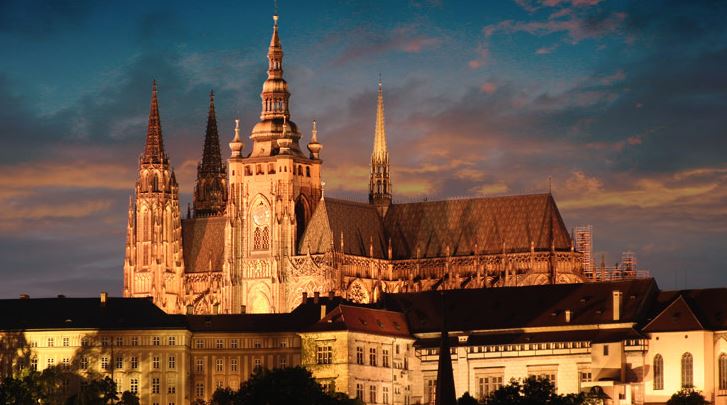Saint Vitus’ Cathedral in Prague stands within the Prague Castle and contains the tombs of many Bohemian kings and Holy Roman Emperors. This Gothic architectural piece is under the ownership of the Czech government as part of the Prague Castle complex.

The Cathedral of Saint Vitus in Prague
The main builder of this cathedral is the Frenchman Matthias of Arras who designed the overall layout of the building as, basically, an import of French Gothic: a triple-naved basilica with flying buttresses, short transept, five-bayed choir and decagon apse with ambulatory and radiating chapels. After Matthias’ death, Peter Parler took up the job and his best contribution has been the so-called Parler’s vaults or net-vaults which have double (not single, as in classic High Gothic groin vaults) diagonal ribs that span the width of the choir-bay. While Matthias of Arras was schooled as a geometer, thus putting an emphasis on rigid systems of proportions and clear, mathematical compositions in his design, Parler was trained as sculptor and woodcarver.
The pride of the cathedral lies in the Chapel of St. Wenceslas, where the relics of the saint are kept. The lower part of the walls are wonderfully decorated with over 1300 semi-precious stones and paintings about the Passion of Christ and the upper part of the walls have paintings about the life of St Wenceslas. A small door with seven locks, in the south-western corner of the chapel, leads to the Crown Chamber containing the Czech Crown Jewels, which are displayed to the public only once every (circa) eight years.
The Cathedral of St. Vitus had tremendous influence on the development of Late Gothic style characteristic for Central Europe. Taking into account that the Perpendicular style and the use of truly extravagant vaults in English Gothic began at the very end of 14th century, it is also quite possible that it was St Vitus Cathedral of Prague that influenced the development of English Gothic.
